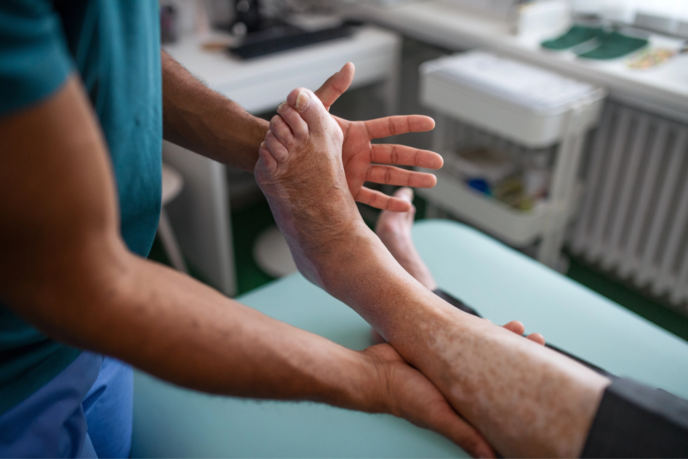
How to Live with Peripheral Artery Disease
Peripheral arterial disease (PAD) is common and treatable, but it’s important to recognize the risk factors and warning signs of PAD so it can be caught early before the disease progresses. If you are living with PAD, you can take steps to help stop your condition from getting more severe.
Dr. Kevin Herman has earned a reputation as a leading authority on peripheral artery disease and as one of the most skilled interventional radiologists on the East Coast. In the article below, Dr. Herman discusses the common risk factors, symptoms, and complications of PAD and how to live with the disease.
How does Peripheral Artery Disease affect your daily life?
PAD can affect the daily lives of patients in multiple ways. Many people may not know that they have PAD, which is theoretically okay, as they’re not symptomatic regarding their peripheral vascular system. PAD is a really strong risk factor for other problems, including coronary artery disease and carotid artery disease. Coronary artery disease can lead to problems with the heart and can cause complications such as a stroke.
While peripheral artery disease may be asymptomatic, it is a very strong factor in those other disease processes, which can be life-threatening. Additionally, people that do suffer from PAD may have symptoms including pain upon walking, called claudication. A patient may have even stronger symptoms like pain in their lower extremities while at rest, which can progress to diseases such as non-healing wounds and gangrene. This would be seen as the end stage of peripheral artery disease.
What are the Major Risk Factors of PAD?
There are multiple risk factors for peripheral artery disease. I like to categorize them in both lifestyle type risk factors versus genetic or hereditary type factors. Lifestyle risk factors include poor diet control, diabetes caused by poor diet, and tobacco smokers. Genetic risk factors include a family history of peripheral artery disease or coronary artery disease, high blood pressure or hypertension, diabetes, and high cholesterol.
Complications of Peripheral Artery Disease
Patients who have PAD are at a higher risk for other problems occurring, such as heart attacks or strokes. They need to manage their condition and not allow it to go undiagnosed for too long. Another way to look at it is, if you look at the population of America, there are approximately 2 million patients aged over 40 who have critical limb ischemia or critical limb threatening ischemia.
Critical limb ischemia is essentially the same as non-healing wounds and gangrene due to peripheral artery disease. That’s approximately 1.28% of the population at that age. Although patients with PAD can progress to that point, that’s not usually the case. In our practice, we specialize in peripheral artery disease and critical limb threatening Ischemia.
Can exercise help prevent the risk of Peripheral Artery Disease?
Exercise alone may not be able to prevent the complete risk of peripheral artery disease. This is particularly true if somebody develops PAD due to lifestyle habits or genetics. However, exercise can certainly modify some of the worsening risk factors. If patients control their diet well and exercise, they can prevent the progression of certain forms of PAD.
Additionally, patients who are suffering from claudication-type symptoms as a result of PAD will often benefit from specific rigid exercise programs. These programs, according to the data and literature, will also improve their overall lifestyle. Exercise may be challenging for patients with gangrene, non-healing wounds, and significant signs of peripheral artery disease in the feet. In most of those instances, irreversible damage has already been done.
Request an Appointment with Dr. Herman
If you’re living with peripheral artery disease, request an appointment with Dr. Herman at NJ Endovascular & Amputation Prevention, or at one of our nearest vascular centers. Dr. Herman and our affiliated vascular specialists can help evaluate and treat your peripheral artery disease so you can live a healthier life.
Related Blogs & Videos
Learn more about vascular health, prevention, and care for Peripheral Artery Disease.




